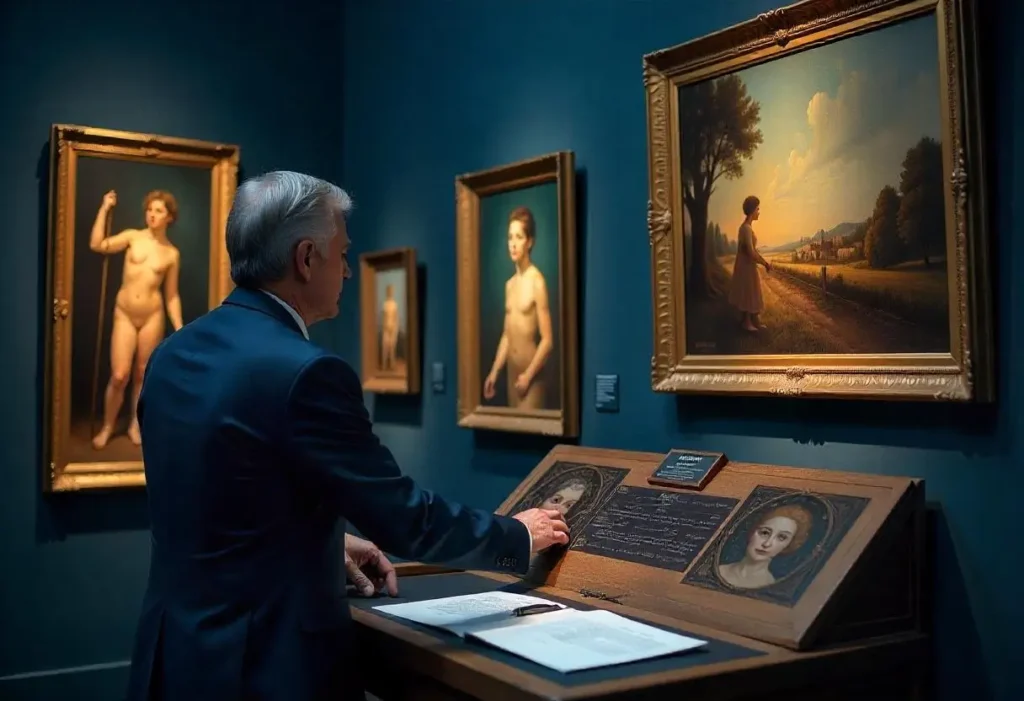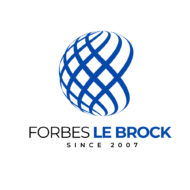Art Finance UK: Avoid Costly Mistakes That Lead to Forced Sales

In the discreet world of high-net-worth individuals (HNWIs) and family offices, significant wealth is often held not just in securities or property, but also in tangible assets of passion — with fine art collections chief among them. Yet, a case involving a London-based couple highlights a critical and often overlooked vulnerability: the gap between asset value and accessible liquidity. Despite owning over £8 million in blue-chip artwork, they found themselves on the brink of financial distress, ultimately forced into a pressured auction sale — a scenario that art finance UK solutions are designed to prevent.
This wasn’t an isolated incident. It’s a cautionary tale that speaks to a broader challenge facing collectors and investors whose wealth is tied up in illiquid holdings. For C-suite executives, family offices, and seasoned advisors, the ability to strategically leverage these passion assets is no longer a fringe concept — it’s fast becoming a core component of effective wealth and liquidity management.
🧠 Want to hear others’ take on the blog post? Listen to this Deep Dive for impartial highlights.🎙️
What Happened? The Anatomy of a Forced Sale
The circumstances were, on the surface, not unusual in the world of high-stakes finance. The couple required capital, reportedly to refinance or repay a short-term bridging loan – a common financial manoeuvre. Their assets were substantial, anchored by a significant art collection featuring recognised artists, solid provenance, and considerable market value – estimated north of £8 million.
The logical step seemed to be leveraging these assets. However, they encountered a familiar roadblock: traditional finance institutions. While adept at lending against property or securities, mainstream banks often view fine art with caution, lacking the internal expertise or risk appetite to accurately assess its value or manage it as collateral for a loan. The valuation process, understanding provenance, and navigating the nuances of the art market fall outside their standard loan process.
Time ran short. Faced with the looming repayment deadline and limited conventional finance options, the couple felt compelled to consign a significant portion of their collection to an auction house. While auctions can achieve strong results under the right conditions, a sale driven by urgency rarely maximises value. The pressure to sell quickly often translates to lower reserves, less strategic marketing, and ultimately, a purchase price potentially far below the collection’s true worth. The £8M collection became a source of stress and potential loss, rather than a pillar of financial strength.

The Illiquidity Trap: Why Valuable Assets Don’t Always Mean Ready Cash
This scenario perfectly illustrates the “illiquidity trap” inherent in many alternative assets, particularly fine art.
- Value vs. Accessibility: Fine art possesses undeniable value, often appreciating significantly over time. However, unlike publicly traded stocks or bonds, converting that value into cash isn’t instantaneous. Selling requires time, finding the right buyer or gallery, potentially navigating auction cycles, and incurring transaction costs.
- The Fallback Fallacy: Many HNW collectors view their art collection as a financial safety net – a reserve to be tapped in emergencies. Yet, as the couple discovered, accessing this value quickly through traditional finance channels is often impossible. The assumption of easy convertibility crumbles when faced with real-world banking limitations.
- Urgency Erodes Value: The need for immediate liquidity is the enemy of optimal asset realisation. A forced sale, whether through a quick private treaty or a rushed auction, signals distress to the market. Buyers anticipate discounts, and the seller loses negotiating leverage. This is particularly true in the opaque and relationship-driven art market. Trying to secure retail finance against such assets under pressure is typically futile.
This trap highlights a critical need for proactive financial strategy among asset-rich individuals. Owning valuable artwork is one thing; having a plan to leverage it effectively, without resorting to fire sales, is another.
The Alternative Path: How Art Finance UK Could Have Rewritten the Story
Imagine a different outcome for the London couple. Instead of facing a forced auction, they could have engaged with a specialist lender in the art finance UK market. Here’s how art-based finance could have provided a lifeline:
- Immediate Liquidity: A specialist art finance team understands the intrinsic value of fine art. Through a discreet appraisal and streamlined application process, they could have quickly provided indicative terms for an art-secured loan, offering a significant portion of the collection’s value (Loan-to-Value ratios, or LTVs, typically range from 40-60%). This capital could have comfortably repaid the bridging loan, instantly alleviating the pressure.
- Preservation of the Collection: The most significant benefit? The couple could have kept their cherished art collection. An art loan uses the artwork as collateral, but ownership remains with the borrower. There would be no need for a rushed, potentially value-destroying sale.
- Time and Flexibility: Fine art lending UK provides breathing room. With the immediate financial pressure resolved, the couple could have planned strategically. Options might include:
- Structuring repayment of the art loan over a manageable period.
- Deciding to sell a single piece, on their own terms, at the right time in the market, to repay the loan if desired.
- Simply holding the collection and repaying the loan through other means.
- Discreet and Confidential Process: Reputable art finance specialists operate with the utmost discretion, understanding the privacy concerns of HNWIs. The loan process, from initial consultation to the loan agreement, is handled confidentially, avoiding the public exposure of a distressed auction sale.
This alternative path underscores the power of specialised finance solutions for collectors. It transforms fine art from a potentially illiquid asset into a flexible financial tool.
Understanding Art-Backed Loans: Key Considerations for Collectors

For HNWIs, family offices, and their advisors considering art finance UK, understanding the mechanics is key. This isn’t standard retail finance; it’s a bespoke service.
- Eligible Assets: Lenders typically focus on high-value artwork by established artists with strong market records and clear provenance. This often includes paintings, sculptures, and sometimes drawings or limited edition prints from recognised names across various types of art (e.g., Old Masters, Impressionist, Modern, Post-War, Contemporary).
- The Loan Process:
- Initial Consultation:Discussing the collection, financial needs, and potential finance options.
- Valuation/Appraisal: An independent, expert appraisal determines the fair market value of the artwork intended as collateral.
- Indicative Terms: The lender provides proposed loan amount (based on LTV), interest rate, and term.
- Due Diligence: Includes KYC (Know Your Customer) checks, proof of ownership, and confirming clear title to the artwork.
- Loan Agreement: Formal documentation outlining the terms, drafted potentially with input from the borrower’s solicitor. This includes the loan and security agreement detailing the pledge over the art.
- Funding:Once agreements are signed and logistics (like secure storage or custodianship, often handled in-house by the lender or a specialist partner) are arranged, the funds are disbursed.
- Types of Finance: Art lending UK offers various structures:
- Short-Term Loans: For bridging immediate liquidity gaps (like the couple’s situation).
- Longer-Term Financing: To unlock capital for other investments, business ventures (art business or otherwise), or estate planning purposes.
- Revolving Credit Lines:Providing ongoing access to capital against the collection’s value.
- Acquisition Finance: Finance to help collectors acquire new pieces.
- Expertise Matters: Partnering with experienced art finance specialists or finance brokers who understand both the art market and complex financial structuring is crucial. Look for a dedicated art finance team with a track record in handling high-value artwork and asset-secured loans. They navigate the legal framework and ensure a smooth process. Some may operate under the oversight of the Financial Conduct Authority (FCA), depending on the specific structure and regulatory scope.
Strategic Imperative: Integrating Art into Wealth Management
The lesson from the £8M near-miss extends beyond crisis management. For sophisticated investors and collectors, art finance UK or anywhere for that matter,should be viewed proactively, as a strategic tool within a broader wealth management framework.
- Unlocking Latent Capital: An art collection, rather than sitting passively, can be leveraged to generate liquidity for diverse opportunities – seizing a time-sensitive investment, funding a business expansion, or managing cash flow needs without disrupting core investment portfolios.
- Diversification and Rebalancing: Art-secured loans UK can provide capital to rebalance portfolios or diversify into other asset classes without needing to sell cherished artwork at an inopportune time.
- Estate and Tax Planning: Fine art lending UK can offer solutions for managing estate taxes or facilitating the transfer of assets across generations in a more tax-efficient manner.
- Enhanced Financial Flexibility: Ultimately, incorporating art finance into planning provides HNWIs with greater financial agility and control over their entire balance sheet, including passion assets. It acknowledges that fine art is not just culturally valuable, but a potentially powerful financial asset.
Conclusion: Transforming Fine Art from Static Asset to Dynamic Capital
The story of the London couple and their £8M collection serves as a stark reminder: possessing valuable assets is not synonymous with having financial flexibility. Illiquidity can turn prized possessions into sources of stress when capital is needed urgently.
However, the evolution of the art finance UK market offers a powerful antidote. Specialist lenders and finance solutions provide a discreet, efficient, and strategic way to unlock the capital tied up in fine art collections. Art-backed loans UK allow collectors to retain ownership of their artwork while accessing needed liquidity, avoiding forced sales and preserving wealth.
For high-level decision-makers, investors, and HNWIs, the mindset must shift. View your art collection not merely as decoration or a long-term store of value, but as a dynamic component of your financial landscape. With the right art finance partner, your passion assets can become a bridge to opportunity, a tool for strategic leverage, and a source of financial resilience – ensuring your finest assets work for you, rather than becoming dead weight in times of need.
Next Steps: Unlock the Potential of Your Collection
Don’t let illiquidity dictate your financial strategy. If you hold significant fine art assets, explore how our fine art loans can provide the flexible finance and capital you need.
Book a discreet consultation today to discuss bespoke finance options tailored for UHNW collectors and investors in the UK and globally. Let us help you leverage your passion.
